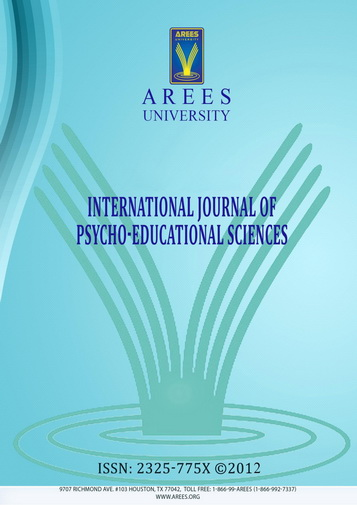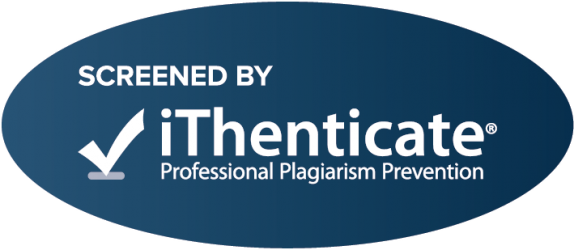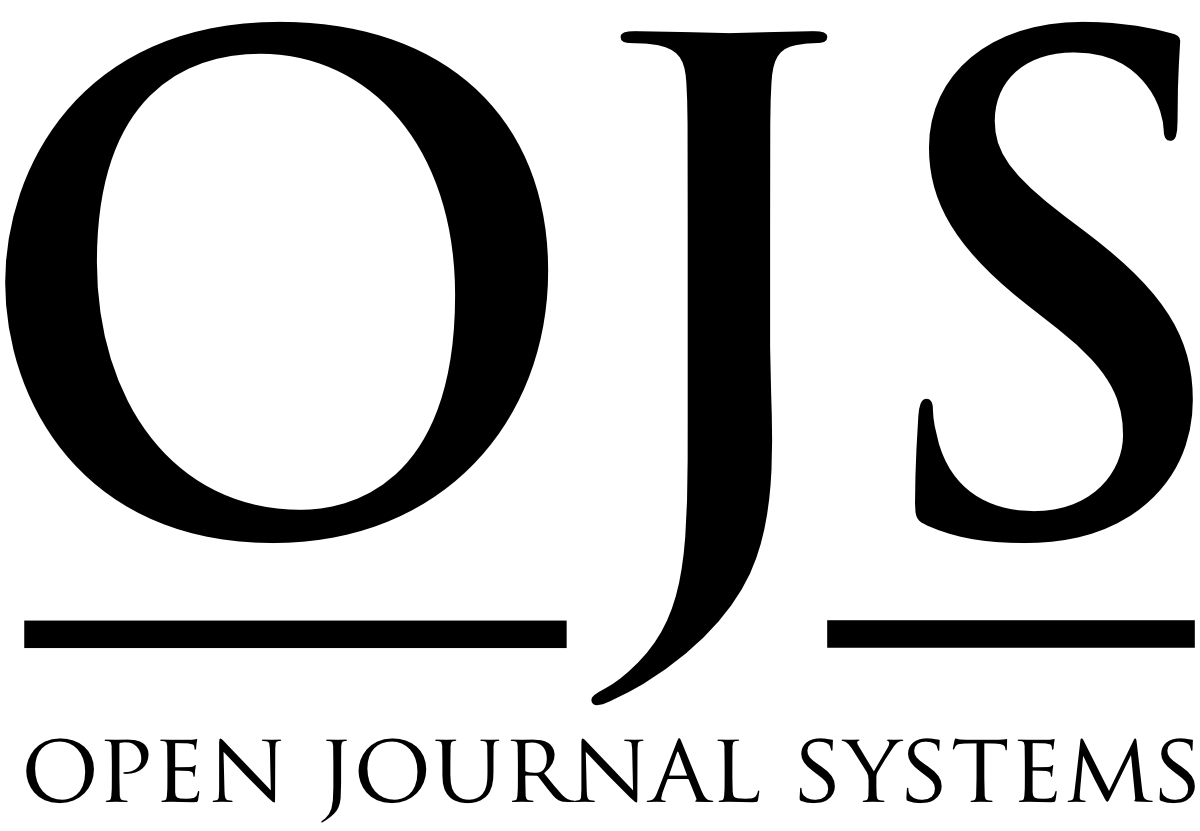Social Problem Solving as a Key Component of Bullying Prevention Programs
Keywords:
Social problem solving, bullying, prevention programsAbstract
Various prevention programs have been developed by countries around the world to reduce bullying and other forms of youth peer abuse. Social problem solving is inherently a part of any bullying prevention curriculum regardless of cultural differences, but rarely is given the recognition and attention it deserves. Scholarly evidence is provided to demonstrate the critical importance of social problem solving as an essential aspect for success of bullying prevention programs. How social problem solving can influence bullies, targets, and bystanders along with suggestions for future research are provided.Downloads
References
Ali, M., Abd-Talib, C., Ibrahim, N. H., Surif, J., & Abdullah, A. H. (2016). The importance of monitoring skills in physics problem solving. European Journal of Education Studies, 1(3), 1-10.
Barsky, A. E. (2014). Conflict resolution for the helping professions (2nd ed.). New York, NY: Oxford University Press.
Blake, J. J., Banks, C. S., Patience, B. A., & Lund, E. M. (2014). School-Based Mental Health Professionals' Bullying Assessment Practices: A Call for Evidence-Based Bullying Assessment Guidelines. Professional School Counseling: 2014-2015, 18(1), 136-147. doi: http://dx.doi.org/10.5330/2156-759X-18.1.136
Care, E., Scoular, C., & Griffin, P. (2016). Assessment of collaborate problem solving in education environments. Applied Measurement in Education, 29(4), 250-264. doi.org/10.1080/08957347.2016.1209204
Carney, J.V., Jacob, C., & Hazler, R.J. (2011). Exposure to school bullying and the social capital of sixth grade students. Journal of Humanistic Counseling. 50, 238-253.
Carney, J. V., & Hazler, R. J. (2016). Successful bullying prevention: A teamwork approach. Psychology and Education, 53,133-142.
Carney, J. V., Hazler, R. J., Oh, I, Hibel, L. C., & Granger, D. A. (2010). The relations between bullying exposures in middle childhood anxiety and adrenocortical activity. Journal of School Violence, 9, 194-211. doi: 10.1080/15388220903479602.
Centers for Disease Control and Prevention. School Connectedness: Strategies for Increasing Protective Factors Among Youth. Atlanta, GA: U.S. Department of Health and Human Services; 2009.
Cornell, D., & Limber, S. P. (2015). Law and policy on the concept of bullying at school. American Psychologist, 70(4), 333-343. doi: http://dx.doi.org/10.1037/a0038558
Craig, W., Harel-Fish, Y., Fogel-Grinvald, H., Dostaler, S., Hetland, J., Simons-Morton, B., & HBSC Bullying Writing Group. (2009). A cross-national profile of bullying and victimization among adolescents in 40 countries. International Journal of Public Health, 54, 216-224. doi:10.1007/s00038-009-5413-9
D’Esposito, S. E., Blake, J., & Riccio, C. A. (2011). Adolescents’ vulnerability to peer victimization: Interpersonal and intrapersonal predictors. Professional School Counseling, 14(5), 299-309. doi: http://dx.doi.org/10.5330/PSC.n.2011-14.299
Doll, B., Song, S., Champion, A., & Jones, K. (2011). Classroom ecologies that support or discourage bullying (pp.147-158). In D. L. Espelage & S. M. Swearer (Eds.). Bullying in North American schools (2nd ed.). New York, NY: Routledge.
D'Zurilla, T. J., Chang, E. C., Nottingham, E J., & Faccini, L. (1998). Social problem solving deficits and hopelessness, depression, and suicidal risk in college students and psychiatric inpatients. Journal of Clinical Psychology, 54(8), 1091-1107. doi:10.1002/(SICI)1097- 4679(199812)54:8<1091::AID-JCLP9>3.0.CO;2-J
D'Zurilla, T. J., & Nezu, A. M. (2007). Problem-solving therapy: A social competence approach to clinical intervention (3rd ed.) New York, NY: Springer.
D'Zurilla, T. J., & Nezu, A. M. (1999). Problem solving therapy: A social competence approach to clinical intervention. New York, NY: Springer.
D’Zurilla, T.J., Nezu, A.M., & Maydeu-Olivares, A. (2004). Social problem solving: Theory and assessment (pp. 11-28). In E. C Chang, T. J. D’Zurilla, & L. J Sanna (Eds.). Social problem solving: Theory, research, and training. Washington, DC: American Psychological Association.
Doob, A., & Cesaroni, C. (2004). Responding to Youth Crime in Canada. Toronto, Canada: University of Toronto Press. doi: 10.1177/1057567707306007
Dubow, E. F., & Tisak, J. (1989). The relation between stressful life events and adjustment in Elementary School children: The role of social support and social problem solving skills. Child Development, 60, 1412-1423.
Esbensen, F., & Carson, D. C. (2009). Consequences of being bullied: Results from a longitudinal assessment of bullying victimization in a multisite sample of American students. Youth & Society, 41(2), 209-233. doi: http://dx.doi.org/10.1177/0044118X09351067
Espelage, D. L., Rose, C. A., & Polanin, J. R. (2015). Social-emotional learning program to reduce bullying, fighting, and victimization among middle school students with disabilities. Remedial and Special Education, 36, 299-311. doi: 10.1177/0741932514564564
Farrington, D. P., & Baldry, A. C. (2010). Individual risk factors for school bullying. Journal of Aggression, Conflict and Peace Research, 2(1), 4-16. doi:10.5042/jacpr.2010.0001
Ferguson, C. J., San Miguel, C., Kilburn, Jr., J. C., & Sanchez, P. (2007). The effectiveness of school-based anti-bullying programs: A meta-analytic review. Criminal Justice Review, 32, 401-414.
Frauenknecht, M., & Black, D. R. (2004). Problem-solving training for children and adolescents (pp. 153-170). In E. C Chang, T. J. D’Zurilla & L. J Sanna (Eds.). Social problem solving: Theory, research, and training. Washington, DC: American Psychological Association.
Goodman-Scott, E., Doyle, B., & Brott, P. (2013). An action research project to determine the utility of bully prevention in positive behavior support for elementary school bullying prevention. Professional School Counseling, 17, 120-129. doi: http://dx.doi.org/10.5330/prsc.17.1.53346473u5052044
Hazler, R. J., & Carney, J.V. (2012). Critical characteristic of effective bullying prevention programs. In S.R. Jimerson, A.B. Mickerson, M.J. Mayer, & M.J. Furlong (Eds.), Handbook of school violence and safety: From research to practice 2nd edition (pp. 357- 368). New York: Routledge.
Hinduja, S., & Patchin, J. W. (2009). Bullying beyond the schoolyard: Preventing and responding to cyberbullying. Thousand Oaks, CA: Sage Publications (Corwin Press).
Hinduja, S., & Patchin, J. W. (2010). Bullying, cyberbullying, and suicide. Archives of Suicide Research, 14(3), 206-221. doi:10.1080/13811118.2010.494133
Hunter, P.E., & Botchwey, N.D. (2016). Partnership in learning. Innovative Higher Education, pp. 1-14. doi:10.1007/s10755-016-9363-x
Joseph, G. E., & Strain, P. S. (2010). Teaching young children interpersonal problem-solving skills. Young Exceptional Children, 13, 28-40.
Juvonen, J., Wang, Y., & Espinoza, G. (2011). Bullying experiences and compromised academic performance across middle school grades. Journal of Early Adolescence, 31, 152-173.
Kennedy, M. R. T., & Coelho, C. (2005). Self-regulation after traumatic brain injury: A framework for intervention of memory and problem solving. Seminars in Speech and Language 26, 242-255.
Leblanc, M., Self-Brown, S., Shepard, D., & Kelly, M. L. (2011). Buffering the effects of violence: Communication and problem solving skills as protective factors for adolescents exposed to violence. Journal of Community Psychology, 39, 353-367.
Limber, S. P., & Small, M. A. (2003). State laws and policies to address bullying in schools. School Psychology Review, 32(3), 445-455.
Luk, J. W., Wang, J., & Simons-Morton, B. G. (2012). The co-occurrence of substance use and bullying behaviors among U.S. adolescents: Understanding demographic characteristics and social influences. Journal of Adolescence, 35, 1351–1360. http://dx.doi.org.ezaccess.libraries.psu.edu/10.1016/j.adolescence.2012.05.003
Mathew, A., & Nanoo, S. (2013). Psychosocial stressors and patterns of coping in adolescent suicide attempters. Indian Journal of Psychological Medicine, 35(1), 39-46. doi:10.4103/0253-7176.112200
McCormac, M. (2014). Preventing and responding to bullying: An elementary school’s 4-year journey. Professional School Counseling: 2014-2015, 18(1), 1-14. doi: http://dx.doi.org/10.5330/prsc.18.1.55607227n4428tkp
McDougall, P., & Vailancourt, T. (2015). Long-term adult outcomes of peer victimization in childhood and adolescence: Pathways to adjustment and maladjustment. American Psychologist, 70, 300-310. doi: http://dx.doi.org/10.1037/a0039174
McGuire, J. (2001). What is problem solving? A review of theory, research, and applications. Criminal Behaviour and Mental Health, 11, 210-235.
Nickerson, A. B., Cornell, D.G., Smith, J.D., & Furlong, M. J. (2014). School anti-bullying efforts. Advice for education policymakers. Journal of School Violence, 12, 268-282. doi: 10.1080/15388220.2013.787366
National Education Association. (2011). NEA calls on states and school districts to step up anti-bullying efforts: Nationwide survey sheds light on school bullying. NES 2011 Press Release. Retrieved from http://www.nea.org/home/49019.htm
Ratnieks, F. L. W., Foster, K. R., & Wenseleers, T. (2006). Annual Review of Entomology, 51, 581-608. doi: 10.1146/annurev.ento.51.110104.151003
Reid, M. J., Webster-Stratton, C., & Hammond, M. (2007). Enhancing a classroom social competence and problem solving curriculum by offering parent training to families of moderate- to high-risk elementary school children. Journal of Clinical Child and Adolescent Psychology, 36, 605-620.
Robers, S., Kemp, J., and Truman, J. (2013). Indicators of School Crime and Safety: 2012 (NCES 2013-036/NCJ 241446). National Center for Education Statistics, U.S. Department of Education, and Bureau of Justice Statistics, Office of Justice Programs, U.S. Department of Justice. Washington, DC. Retrieved from http://nces.ed.gov/pubs2013/2013036.pdf
Rodkin, P. C., Espelage, D. L., & Hanish, L. D. (2015). A relational framework for understanding bullying: Developmental antecedents and outcomes. American Psychologist, 70, 311-321.
Sherer, Y. C., & Nickerson, A. B. (2010). Anti-bullying practices in American schools. Psychology in Schools, 47, 217-229. doi: 10.1002/pits.20466
Swearer, S. M., Espelage, D. L., Vallancourt, T., & Hymel, S. (2010). What can be done about school bullying? Linking research to educational practice. Educational Researcher, 39, 38-47. doi: 10.3102/0013189X09357622
Sweeney, B., & Carruthers, W. L. (1996). Conflict resolution: History, philosophy, theory, and educational applications. School Counselor, 43(5), 325-344.
Takahashi, F., Koseki, S., & Shimada, H. (2009). Developmental trends in children's aggression and social problem solving. Journal of Applied Developmental Psychology, 30(3), 265-272. doi:10.1016/j.appdev.2008.12.007
Temel, S. & Morgil, I. (2012). Problem solving applications in chemistry. Journal of Faculty Educational Sciences, 45, 55-76.
Ttofi, M. M., & Farrington, D. P. (2011). Effectiveness of school-based programs to reduce bullying: A systematic and meta-analytic review. Journal of Experimental Criminology, 7, 27-56.
U.S. Department of Education (2013). Student reports of bullying and cyber-bullying: Results from the 2011. School Crime Supplement to the National Crime Victimization Survey. Institute of Education Sciences, National Center for Education Statistics.
Van Zant, A. B., & Kray, L. J. (2015). Negotiation and conflict resolution: A behavioral decision research perspective (pp. 828-848). In G. Keren, & G. Wu (Eds.). Handbook of judgement and decision making. Hoboken NJ: Wiley & Sons.
Winburn, J., Winburn, A., & Niemeyer, R. (2014). Media coverage and issue visibility: State legislative responses to school bullying. The Social Science Journal, 51(4), 514-522. doi: 10.1016/j.soscij.2014.04.004
Zhang, W., Li, H., Gong, Y., & Ungar, M. (2013). Stressful events and depression among Chinese adolescents: The mitigating role of protective factors. School Psychology International, 34(5), 501-513. doi:10.1177/0143034312472760
Additional Files
Published
How to Cite
Issue
Section
License

This work is licensed under a Creative Commons Attribution-NonCommercial-NoDerivatives 4.0 International License.










